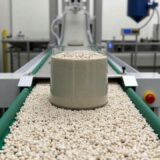Pierre Gy (1924-2015) was a groundbreaking scientist who revolutionized the field of sampling theory through his pioneering research and development of the Theory of Sampling (TOS). Over a remarkable career spanning five decades, Gy transformed sampling from an imprecise practice into a rigorous scientific discipline.
His most significant contribution to the field was the development of what became known as “Gy’s formula,” which provided a scientific foundation for calculating representative samples. This mathematical framework proved invaluable across multiple industries, as it could be applied not only to solid materials in mining operations but also to liquids and multi-phase media.
Between 1950 and 1975, he single-handedly developed the Theory of Sampling, followed by 25 years of practical application in various industrial sectors, including mining, minerals, cement, and metals processing.
Throughout his career, Gy demonstrated exceptional productivity and influence in his field. He authored nine books and delivered more than 250 international presentations on sampling-related topics. His work as an independent researcher and consultant helped bridge the gap between theoretical understanding and practical application, making him a unique figure in the scientific community. But he never worked at a university; he was an independent researcher and a consultant for nearly his entire career—a remarkable scientific life and achievements.
The impact of Gy’s work continues to resonate across industries today, as his systematic approach transformed sampling from what was once considered a “black art” into a reliable analytical tool. His theoretical framework ensures that sampling processes can be conducted with scientific precision rather than relying on chance, making him a true pioneer whose contributions have fundamentally shaped modern sampling practices.





































